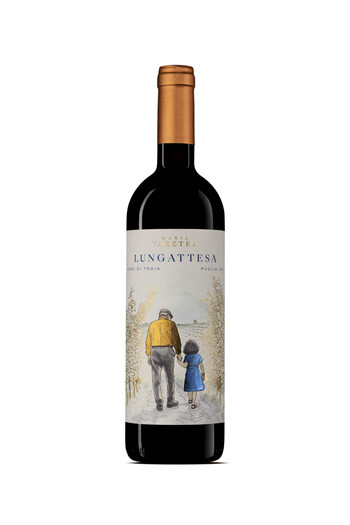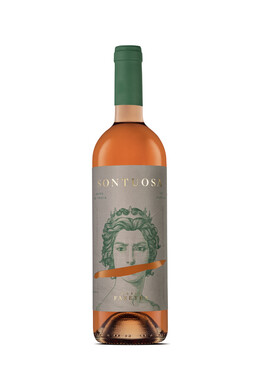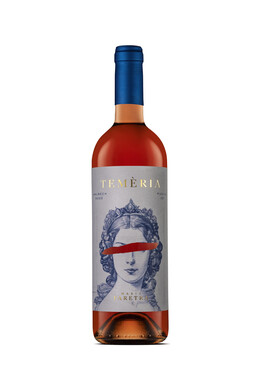The Nero di Troia is among the oldest indigenous grape varieties of Apulia. It produces high-quality grapes thanks to the typical pedoclimatic conditions of the Capitanata area, characterized by fertile, limestone-rich soils and a warm, dry climate. Made from carefully selected grapes grown using organic methods, our Nero di Troia captivates the eye with its ruby-red color and stands out for a structure defined by perfectly integrated tannins. The result is an intense and harmonious wine, an authentic expression of the Apulian territory.
Lungattesa, in the image of an elderly man and a little girl walking among the rows of vines, the soul of this wine is reflected: the invisible bridge that connects past and future. It is the story of a father who dedicated his life to the vineyard and of a daughter who, as an adult, discovers within herself the same passion, now passing it on to a new generation. The elderly man holds the little girl’s hand, guiding her through the telling of a story that is still unwritten, yet already filled with emotion. The name ‘Lungattesa’ conveys the slow rhythm of nature. Nero di Troia is a late-growing grape, which demands patience, attention, and respect for its timing. Waiting for its ripening is a gesture of love and trust—a lesson learned yearly by those who cultivate the land: the strength of resilience is born from knowing how to wait. In that suspended moment among the vines, the wisdom of the elder meets the wonder of the child. It is there that ancient values are handed down: family as a root, dreams as a horizon, ideals as a guide. Thus, ‘Lungattesa’ becomes a wine that not only preserves the fruit of labor, but celebrates the art of patience, respect for nature, and the love that binds generations.
Lungattesa, Nero di Troia, Puglia IGT 2025
| Designation: | Nero di Troia IGT Puglia |
| Grape variety: | Nero di Troia 100%. |
| Vineyards of origin: | Nero di Troia, 8 years old, located in the municipality of Orta Nova. |
| Training system: | Spur-pruned cordon, 4,430 plants per hectare. |
| Harvest time: | late September. |
| Soil: | Clay-loam and rich in skeleton. |
 Download the technical sheet PDF Download the technical sheet PDF |





























